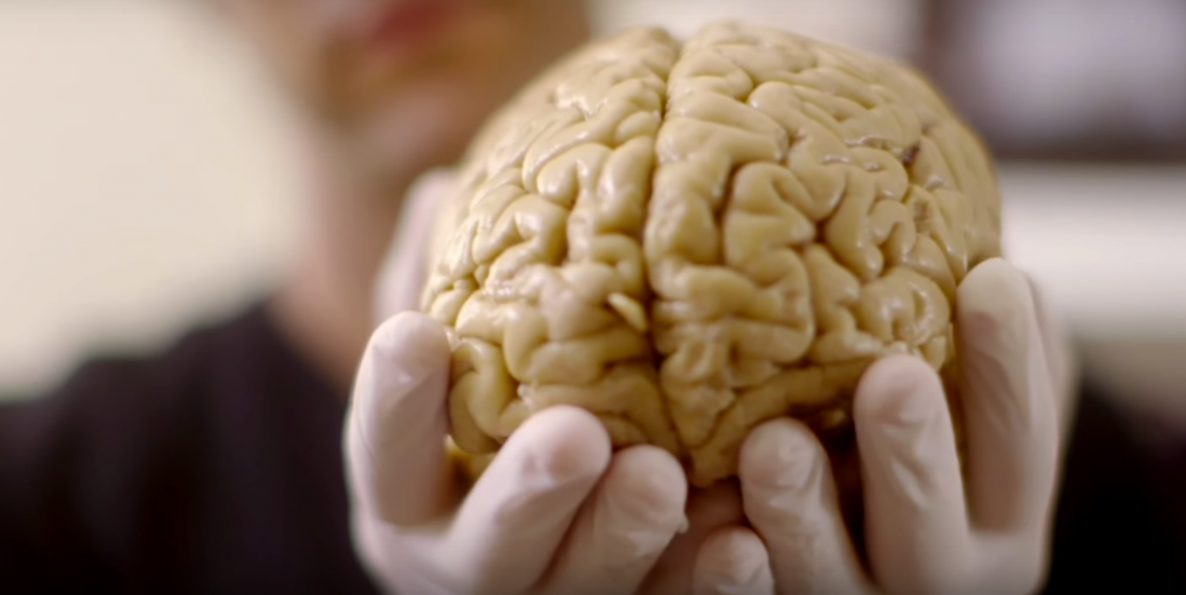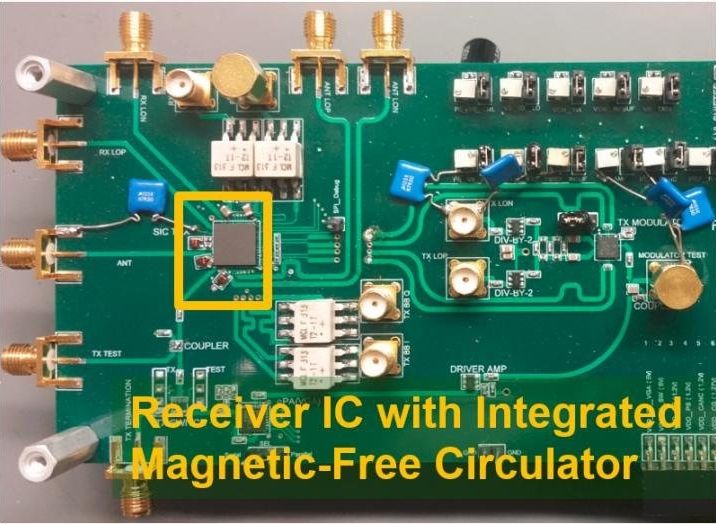Yes; we have. BMIs are here; and only going to advance from here.
It’s a huge breathrough.


Nthing new; nice to see more folks waking up.
We’re moving beyond just prosthetics and wearable tech. Soon, we’ll all by cyborgs in one way or another.
From The Six Million Dollar Man to Inspector Gadget to Robocop, humans with bionic body parts have become commonplace in fiction. In the real world, we use technology to restore functionality to missing or defective body parts; in science fiction, such technology gives characters superhuman abilities. The future of cyborgs may hinge on that distinction.
The Defense Advanced Research Projects Agency (DARPA) plans to develop a brain implant that links human brains to computers. Under the Obama administration’s Brain Initiative, DARPA has developed eight programs designed to enhance human physical and cognitive capabilities. The Neural Engineering System Design program seeks to “bridge the bio-electronic divide” via a small implant that acts as a translator between the brain and the digital world, giving humans improved sight and hearing.


Breaking the stereotype stigma; great article on CAN PM. I love it when folks break the boundaries and stereotypes that society often places on groups.
Canadian Prime Minister Justin Trudeau proved he’s more than just a pretty face when he wowed a room full of reporters and physicists with his knowledge of quantum computing.
The dashing politician was delivering his budget announcement at a press conference at the Perimeter Institute for Theoretical Physics Waterloo in Ontario, when he was put on the spot by a journalist.
The reporter opened his question by joking ‘I was was going to ask you about quantum computing, but …’ He then went onto ask the PM about Canada’s fight against ISIS.

“This technology could revolutionize the field of telecommunications,” says Krishnaswamy, director of the Columbia High-Speed and Mm-wave IC (CoSMIC) Lab. “Our circulator is the first to be put on a silicon chip, and we get literally orders of magnitude better performance than prior work. Full-duplex communications, where the transmitter and the receiver operate at the same time and at the same frequency, has become a critical research area and now we’ve shown that WiFi capacity can be doubled on a nanoscale silicon chip with a single antenna. This has enormous implications for devices like smartphones and tablets.”
Krishnaswamy’s group has been working on silicon radio chips for full duplex communications for several years and became particularly interested in the role of the circulator, a component that enables full-duplex communications where the transmitter and the receiver share the same antenna. In order to do this, the circulator has to “break” Lorentz Reciprocity, a fundamental physical characteristic of most electronic structures that requires electromagnetic waves travel in the same manner in forward and reverse directions.
“Reciprocal circuits and systems are quite restrictive because you can’t control the signal freely,” says PhD student Negar Reiskarimian, who developed the circulator and is lead author of the Nature Communications paper. “We wanted to create a simple and efficient way, using conventional materials, to break Lorentz Reciprocity and build a low-cost nanoscale circulator that would fit on a chip. This could open up the door to all kinds of exciting new applications.”


A new patent filed by Apple could offer a glimpse into the future of MacBook design, and it would be a much less tactile experience. The patent for a “Configurable Force-Sensitive Input Structure for Electronic Devices” was filed in September 2014 and was made available to the public last week. It describes a haptic-powered touch keyboard for devices like laptops. Such a device wouldn’t have any physical key switches, just a touch-sensitive layer with virtual keys.
The system would essentially consist of a large metal contact layer with the ability to sense not just touches, but the amount of force applied — 3D Touch, basically. The user would tap a key, which is really just a configurable area of the surface, and they get a haptic jolt to simulate pressing a key. The array of keys on the virtual keyboard would be marked by a light guide shining up from underneath.
Apple files patents on plenty of things that never see the light of day, but this seems like something it might want to use. Of course, that assumes it can get anywhere close to a real typing experience in terms of speed and accuracy. The company is constantly trying to slim down its MacBooks, to the point that it went all-in with USB Type-C on the latest MacBook Air. The keyboard is one of the thickest single components of the device now. If the physical keys could be done away with, the computer could approach tablet levels of thinness.
CARJAM TV — Subscribe Here Now https://www.youtube.com/user/CarjamRadio/videos
Like Us Now On Facebook: http://www.facebook.com/CarjamTV
For The World’s Best Car Videos.
Website: http://www.carjamtv.com
Mercedes S Class Driverless Car Is Here 2015 Commercial Self Driving Mercedes S Class W222. As the inventor of the automobile, Mercedes-Benz natural assumes a pioneering role where autonomous driving is concerned. The declared aim is to develop the automobile further, from a self-moving (“automobile”) vehicle to an independent (“autonomous”) vehicle. In its research and development activities, Mercedes-Benz goes well beyond purely technical realisation of automated driving and anticipates various scenarios.
Semi-autonomous driving is already a fact on public roads today – for example with the Mercedes-Benz models in the S-, E-, C- and CLS-Class. One such feature is Stop-and-Go Assist, which automatically follows tailback traffic and provides steering assistance. When parking with the aid of Active Park Assist, the technology chooses a suitable parking space and takes over the steering. The driver only needs to accelerate and brake. Mercedes-Benz is continuing its “Intelligent Drive” strategy with numerous assistance systems and substantially expanded functions with the aim of systematically enhancing comfort and safety. CARJAM TV. An autonomous car, also known as a driverless car, self-driving car or robot car, is an autonomous vehicle capable of fulfilling the human transportation capabilities of a traditional car. As an autonomous vehicle, it is capable of sensing its environment and navigating without human input.
Autonomous vehicles sense their surroundings with such techniques as radar, lidar, GPS, and computer vision. Advanced control systems interpret sensory information to identify appropriate navigation paths, as well as obstacles and relevant signage.[6] Some autonomous vehicles update their maps based on sensory input, allowing the vehicles to keep track of their position even when conditions change or when they enter uncharted environments.
Some quasi-autonomous demonstration systems date back to the 1920s and the 1930s.[7] Since the 1980s, when Mercedes-Benz and Bundeswehr University Munich built a driverless car through the EUREKA Prometheus Project,[8] significant advances have been made in both technology and legislation relevant to autonomous cars. Numerous major companies and research organizations have developed working prototype autonomous vehicles, including Mercedes-Benz, General Motors, Continental Automotive Systems, Autoliv Inc., Bosch, Nissan, Toyota, Audi, Vislab from University of Parma, Oxford University and Google. In 2010, four electric autonomous vans successfully drove 8000 miles from Italy to China. The vehicles were developed in a research project backed by European Union funding, by Vislab of the University of Parma, Italy. As of 2013, four U.S. states have passed laws permitting autonomous cars.
Many major automotive manufacturers, including General Motors, Ford, Mercedes Benz, Volkswagen, Audi, Nissan, Toyota, BMW, and Volvo, are testing driverless car systems as of 2013. BMW has been testing driverless systems since around 2005,[67][68] while in 2010, Audi sent a driverless Audi TTS to the top of Pike’s Peak at close to race speeds.[10] In 2011, GM created the EN-V (short for Electric Networked Vehicle), an autonomous electric urban vehicle.[69] In 2012, Volkswagen began testing a “Temporary Auto Pilot” (TAP) system that will allow a car to drive itself at speeds of up to 80 miles per hour (130 km/h) on the highway.[70] Ford has conducted extensive research into driverless systems and vehicular communication systems.[71] In January 2013, Toyota demonstrated a partially self-driving car with numerous sensors and communication systems. The Google driverless car project maintains a test fleet of autonomous vehicles that has driven 300,000 miles (480,000 km) with no machine-caused accidents as of August 2012.


Creative approach and I like it. I advise IT leaders, developers, architects, etc. to start learning as much as they can about Quantum Technology because technology in the next 6 to 7 years will begin the accelerated adoption of this technology and at that point it will be too late for folks in tech to catch up. Now is the time to learn and keep track of the progression of this technology as well as understand where and how this technology can be leveraged earlier in various areas of the infrastructure, devices, and even in industry.
Researchers gave internet users games that simulate quantum physics experiments, and internet users gave the researchers more elegant solutions.